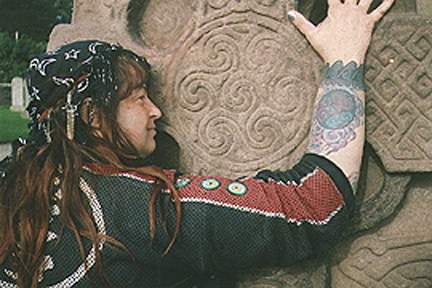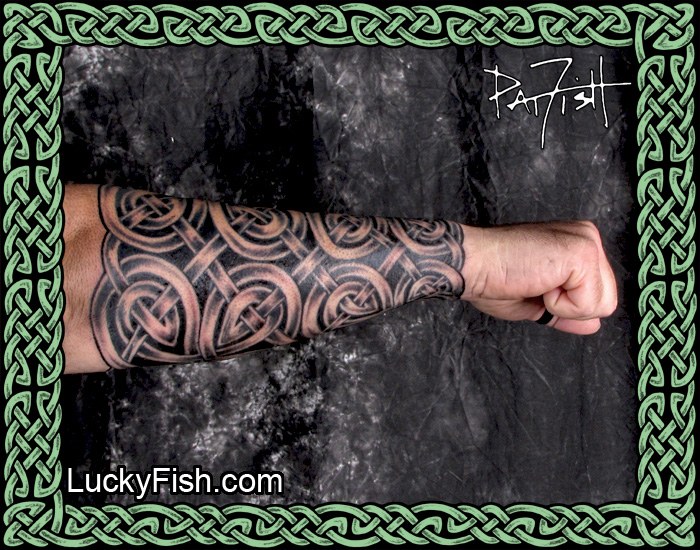Celtic Tattoo Traditions and Styles
Pat Fish at Aberlemno, Scotland
It is a natural inclination to take pleasure in ones ethnic and genetic heritage. We are, all of us, the distillation of our ancestors, connected to those who came before by us our bloodlines and genetics.
So it makes perfect sense that anyone with a Celtic heritage would look to the wealth of iconography and symbolism in Celtic art as inspiration for their tattoos. For people whose heritage connects to any of the seven Celtic Nations, be they Irish, Scots, Manx, Welsh, Cornish, Gallic or Breton, these designs can be a way of showing pride in their heritage by reaffirming an affinity with this highest expression of an indigenous artistic style.
While I consider all of these traditions to fall into the category of 'Celtic', I have created sub-pages with more extensive and specific information about:
When I began my tattoo career in 1984, it was my fervent goal to learn to tattoo this unique style of art. I didn't see much of it being done except in Northern Europe, but I felt a deep resonance with the intricate complexity of this art form from antiquity.
In the years since, I have specialized and studied, and I take great pleasure in working with clients to bring the art and styles of many ancient sources to life in skin. I enjoy the unique challenge of adapting these intricate and complex patterns for tattooing.
Read the pages linked below for more information about some of these historical sources and how they become tattoos.
The first thought of many people wanting a Celtic tattoo is a high cross, or a claddagh, and while I have developed proficiency at creating custom versions of these designs and installing them, I also have stretched the medium of tattooing to encompass other forms of Celtic style. I especially like searching out clever designs that may survive on ancient manuscript pages as borders or marginalia, exceedingly tiny artistic embellishments in those precious hand-made books. Having survived for so many centuries, they speak to a deep place in us now, and starting with their historic example I work with clients to make something both faithful to the original and translated into skin.
Examples of this kind of work can be seen in the portfolio of knotwork sleeves, where a knot or carpet pattern from an old manuscript is morphed with the magic of computers and graph paper to become a form-fitting approximation of body armor. The look is quite unique, my favorite challenge, and it brings the Celtic designs into the same kind of comprehensive sculptural quality so impressive in Polynesian and Japanese tattooing:
When I started tattooing I counted myself fortunate whenever I was able to do ANY Celtic design. Nowadays, as a result of specializing in this for so long, more than four decades, I am able to do them daily, allowing for a lot of experimentation with ways to render shading and colors. I expect to be experimenting and learning for many more years.
It is an honor and a privilege that I am doing my bit to embellish and enhance those who also feel an affinity with this tradition. If this describes you, please view my CELTIC TATTOO PORTFOLIO (as well as the other pages linked here), and consider making an appointment to visit Santa Barbara and get a permanent Celtic Tattoo Souvenir!
I also encourage you to check out my online store where I sell my original Celtic and Pictish designs: LuckyFish Art. If it is not possible for you to come to Santa Barbara, the image sale site gives you a way to procure a clear pattern by immediate download to then take to your local tattoo artist for installation.


